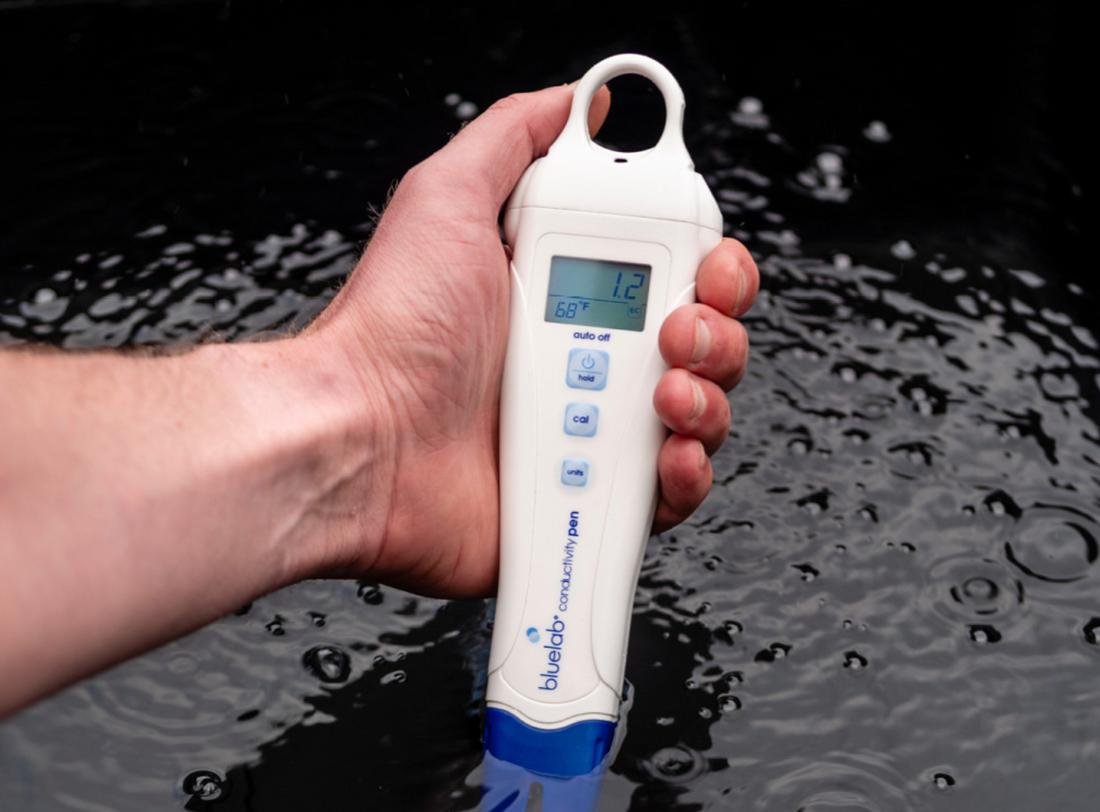The quality and content of the water you use is key to the success of your growing system in Hydroponics.
Any hydroponic grower will tell you to use RO water, or to take precautionary measures while using municipal water, as the water may be too 'hard'. An understanding of water quality can be your crop’s make or break when it comes to thriving plant growth. Why? Water can contain contaminants that cause a wide array of issues, from reducing irrigation flow and affecting plant nutrients to inhibiting the control of pathogens.
So how do we measure water quality?
Start by finding out how ‘pure’ your water is. This would mean, how close it measures to pH 7.0 and an EC value of 0.0 or close to it.
Pure water is composed of:
- Equal parts the hydrogen ion (H+) and hydroxyl ion (OH- )
- A balance of H+ and OH- produces a neutral pH of 7.0.
- No other minerals, microbes, pathogens or contaminants.
‘Pure water’ is used as a reference point in growing systems, as there are no contaminants interfering with water treatment and there’s nothing present that could be detrimental to plant growth or the performance of added nutrients.
Here are the main benefits of using pure water:
No waste ions: these ions can disrupt the optimal nutrient ratios once a nutrient mix is added. For example, waste ions like sodium can limit the uptake of essential nutrients like potassium.
No physical, chemical or biological contaminants: when nutrients are added, these contaminants could react and result in an insoluble precipitate that's unavailable to the plant.
No elements that could harm biological treatments: these beneficial microbes could be present in growth media or other biological control organisms that may be part of an integrated pest management (IPM) programme.
No pathogens or insoluble matter present: these could interfere with water disinfection treatments.
No unwanted salts: these could potentially cause plant health issues.
What are your sources of water?
Source water refers to the water you have available to use for irrigation. You won’t always be able to choose your source water, but it’s good to be aware of each type’s advantages and disadvantages. Some of the sources are:
1. Rainwater: Often considered to be the best water for crop irrigation.
The natural water cycle results in water that is quite pure with only small traces of minerals due to reactions with atmospheric gases. However, when collecting rainwater from roof structures, this water could contain contaminants, such as lead and asbestos.
2. Groundwater: This type of water can be good for crop irrigation.
It may, however, have high levels of dissolved minerals such as calcium carbonate, especially if limestone is present. The pH may be higher as a result. Groundwater can also be contaminated by material leaching into it from surface activities, such as waste disposal, farming or industry.
Domestic or tap water: The quality of this type of water can be varied, depending on its origin and how it's been treated.
Normally, tap water is purified through filtration or desalination; chlorine or chloramine could also be added to neutralise pathogens. These added elements can cause slow plant growth and negatively impact the microbes present in your growing environment.
No matter which source water you use, you need to monitor it consistently so that you always know its levels of contaminants and can therefore carry out effective treatments.
You should be testing your source water regularly. You can choose to send samples for laboratory analysis, but the simplest and quickest way is to use the following fundamental measurements to monitor quality:
pH:
Ideally, your source water should have a pH of 7.0. Measuring your pH can indicate the presence of contaminants.
Electrical Conductivity (EC):
Pure water EC value should be 0.0, as it does not have any content that can conduct electricity. By measuring your EC, you’ll get an idea of the presence of ionic nutrients, elements or heavy metals that may disrupt a carefully calibrated growing system. However, even with an EC reading of zero, non-ionic contaminants could still be present.
When is the best time to test your water
- Before adding nutrients: The truth is, nutrients are expensive so you don’t want to add what’s already there. Nor do you want to risk nutrients precipitating out of the solution or having toxic effects on the plants. The aim is to maintain optimal nutrient ratios.
-
Once your nutrients have run through your grow system: you can examine the strength of your nutrient solution at this stage, but keep in mind that you won’t be assessing water quality alone.
Here are the Top 3 Tools to measure your Water Quality Reliably:
Bluelab pH Pen This fast and accurate handheld pen will help you measure pH and temperature in water and solution on the go.
Bluelab Conductivity Pen This convenient handheld pen will take quick EC and temperature readings in water and solution.
Bluelab Combo Meter Measuring the parameters of pH, conductivity and temperature at the click of a button in water and solution, this three-in-one meter will become your go-to growing companion.
For Advanced Growers, there are automated 24/7 monitoring tools to measure pH and EC.

